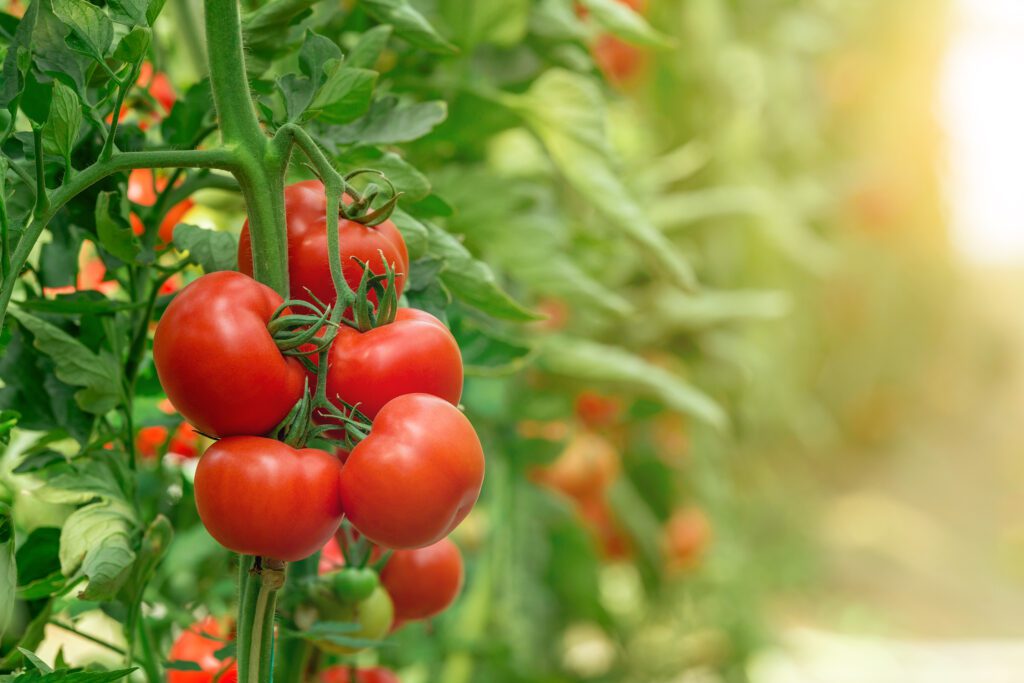Florida a Heavy Hitter in U.S. Tomato Production
by TERESA SCHIFFER
Sponsored by Farm Credit of Central Florida
Tomatoes are one of the most widely consumed vegetables worldwide, and a favorite among home gardeners. They tend to be easy to grow and are as nutritious as they are versatile. The United States is a global leader in tomato production, with California and Florida vying for the top spot among tomato-producing states.
How Tomatoes Took Over the World
Tomato history begins in South America, where researchers believe cherry-sized tomatoes originated in Ecuador about 80,000 years ago. Over time, the weedy tomato plants spread northward into Mesoamerica, where domestication of the tomato began about 7,000 years ago.
When the Spanish conquistadors were exploring the American continents in the 16th and 17th centuries, they were introduced to the tomato and carried the plants back to Europe. There, botanists of the day recognized that the tomato plant was a member of the nightshade family of toxic plants. This caused much hesitation when it came to consuming the fruit of the tomato plant at the time.
Eventually European cooks realized the safety and tastiness of the ornamental tomato, and that just the leaves and roots of the plant contain the neurotoxin solanine. It is speculated that the first tomatoes introduced in Europe may have been yellow due to the Italian name for the vegetable being pomodoro, which means “golden apple.”
Tomatoes made their way back over the Atlantic Ocean with the Europeans who would settle in North America by the late 1700s. Thomas Jefferson was growing them at Monticello in 1781, and they were being eaten as food in Louisiana by 1812, though the northeastern states didn’t begin actually consuming tomatoes until around 1835.
Then in the 20th century tomatoes really skyrocketed in popularity in the U.S., and before long they were being grown commercially throughout the United States and the world.
Tomatoes Today
Tomatoes are now enjoyed fresh in salads and on their own, canned and diced, crushed, stewed and sauced, made into ketchup, pastes, and soups, and juiced. No matter how you prefer to consume the juicy veggies they provide a healthy dose of vitamin C and the antioxidant lycopene.
Florida competes closely with California when it comes to being the nation’s top producer of tomatoes. In 2020, Florida was the number one tomato producer in the U.S., producing enough tomatoes to account for 64 percent of the value of America’s tomato crops. The Florida Department of Agriculture put the value of that year’s harvest in Florida at $463 million. North America’s largest single producer of tomatoes, Lipman Family Farms, is located in Immokalee, Florida.
Tomatoes are a warm-season crop, and the harvest season in Florida runs from October through June, peaking in April and May. They are grown in fields and greenhouses throughout the state, both commercially and by hobby gardeners. Tomatoes are often a satisfying cultivation project for many first-time vegetable gardeners.
Since they do grow so well in a warm climate, there has been a dramatic increase in the number of tomatoes being imported from Mexico in recent years, which has then had a significant impact on the price that Florida farmers are able to get at market for their crops.
While tomato producers south of the U.S. border have lower labor costs and strong financial support from the Mexican government for creating protected agriculture projects, Florida farmers have seen a reduction in their crop yields after the pesticide methyl bromide was banned in 2015. Though production is still comparatively high here in Florida, the harvested acreage has declined over the past decade as well.
Mexican imports currently outnumber domestic tomatoes three to one, so be sure to support local agriculture by always looking for tomatoes and other produce that is grown in Florida!

